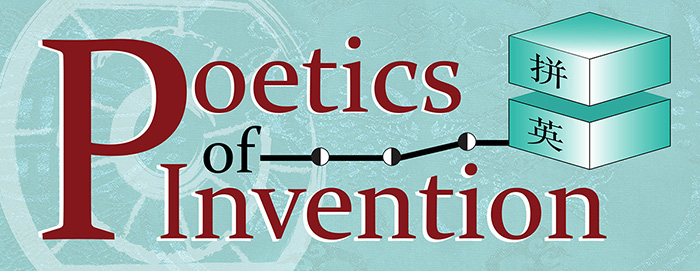How to Write an English Jueju
1. Only use monosyllabic words. Surprisingly, English has one of the largest vocabularies of monosyllabic words.
2. Choose words that are imagistic. Here the saying “show, don’t tell” is in full effect, but the good news is that monosyllabic words rank high in imageability as they often refer to concrete things. Classical Chinese poetry rarely includes function words like articles, which are called empty words in Chinese like (like “the” or “a”).
1. 仅使用单音节词。出乎意料的是英语是拥有最多单音节词的语言之一。
2. 选择具有意象的词汇。在这里,“暗示而非直言”被发挥到极致。幸而单音节词在意象性上别具优势,因为它们通常都指代具体事物。中国古诗几乎不使用虚词(比如英语中的“the”和“a”)。
3. 写作五言绝句时,意象词汇按照2+3的分组模式组合。而七言绝句则按2+2+3的模式组合。例如:
“黯(形容词)+苔(名词)”与 “素(形容词)+枝(名词)”为一对词组。
“风摧树” 为结尾。
在这个例子中,每个词组中的字之间的联系应该比同组之间更为紧密。例如,“枝+风”就不如“风+摧”来得紧密。其目的就是在于构建词组中词与词之间的紧密联系。
4. 遵循AABA 的格律:六,月,道,速
英语并不像汉语有声调,所以用英语作诗,只需遵循基本的韵脚。
在“宋代”展厅内,依据是长元音(例如“log”)还是短元音(例如“lock”),英语的元音被分为阴阳两类。但在英语绝句中这一规则并不适用。如果严格遵循绝句的规则,如果韵脚是长元音,那么非押韵词就需是短元音,反之亦然。
3. When composing a 5-character Jueju poem, pair your imagistic words in groups of 2+3. When composing a 7-character Jueju, pair your images into groups of 2+2+3 word units. Here are some examples: Dark (adj.) + moss (n.) (&) pale (adj) + limbs (n.) is a couple of pairs. Wind + bends + trees is a final unit. The point is that the words within each unit should stick more closely to each other than to words from different units. For instance, “limbs + wind” do not connect as well as “wind + bends.” The goal is to build units that hold together in this pattern.
4. Observe the rhyme scheme of AABA: June, moon, path, soon. English does not have tones like Chinese, so one only needs to follow basic end-rhymes. English vowels in the Song Dynasty room are split into yin/yang categories based on whether they are long (“log”) or short (“lock”), but this rule need not apply to the basic English Jueju. When the rules are strictly followed, one would want the unrhymed word to be short if the rhymed words are long and vice versa.
5. Thematic progression: Observe the thematic progression of lines following the sequence below:
Line One: Introduce a scene (often a scene in nature)
Line Two: Extend and deepen the scene
Line Three: Introduce a shift or turn (often revealing something of the poet’s inner feelings or about the human world in general).
Classical Chinese poetry thrives on an implicit relationship between the nature presented in the first two lines and the inner emotional world of human beings presented in the third line.
6. Parallelism: Vertical matching of grammar and of meaning and tones.
Lines must relate to one another vertically by matching nouns with nouns in the same position within the lines (for instance, “grass” and “weeds”), and adjectives with adjectives, verbs to verbs, particles to particles. In the case of the first two lines, the parallelism should reveal a similarity; in the second and third lines they should reveal a dichotomy, difference, or opposition. The fourth line must not be parallel or anti-parallel.
5. 主题推进:顺应以下顺序进行主题推进:
第一行:介绍场景(一般是自然界的场景)
第二行:扩展或是加深场景
第三行:引入转移或转折(通常是揭示诗人的内心感受或者是针对普罗大众的感情)。
中国古典诗歌盛行的是一种含蓄的关系表达,也就是前两句里展示的自然界与第三句里展示的人类内心情感世界之间的关系。
第四句:结论,结尾,盖棺定论。这一句给全诗做个完整的结尾。

Regulated Jueju by OU student Sophia A. Fernald
The author of the poem here has fulfilled all the requirements of Classical Chinese Regulated Verse in English by following the rules established by the rime tables. She has followed a strict pattern of alternating yin and yang vowels. Hollow circles indicate the yang (long) vowels, and solid circles the yin (short) vowels.
The poet has also balanced the meaning of words through strict vertical parallelism and anti-parallelism (“cold” and “brisk” against “warm”) while keeping the rhyme scheme and thematic progression.



